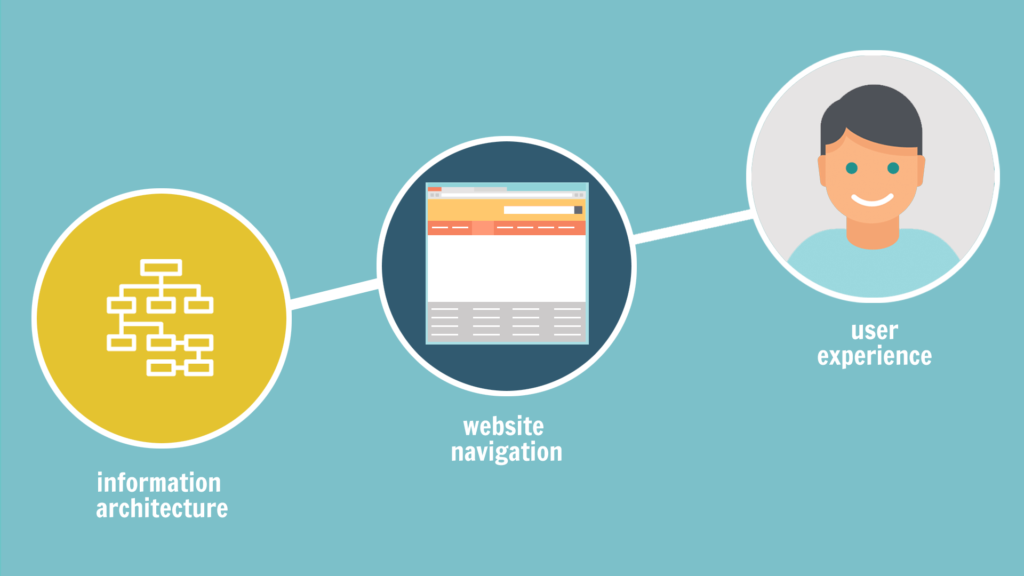Having a well-planned website structure is crucial for search engine optimization (SEO) and providing a good user experience. When planning your website structure, there are several key factors to consider. In this article, we will look at how to plan website structure for SEO.

Conduct Thorough Audience and Keyword Research
The first critical step is gaining a deep understanding of your target audience and what keyword terms they are searching for.
- Who exactly are the people you are creating content for? Get very specific about their demographics, interests, and pain points.
- What questions are they asking? What information are they seeking.
- Conduct extensive keyword research using tools like Google Keyword Planner to uncover the specifics around keyword volume and competitiveness.
This will provide the foundation for structuring your content and site architecture.
Analyze Competitors and Benchmark
Thoroughly study competitor websites, especially those ranking on the first page for your target keywords.
- What specific pages of theirs are ranking well?
- Where are those important pages positioned in their site architecture?
- What keywords are they targeting and optimizing those pages for?
This competitive analysis will provide a benchmark for your own site structure. You can model what is working well for others in your space.
Create a Semantic Site Structure
Group related content together into semantic clusters, organized intelligently around topics and meaning. This creates a semantic core. For example, cluster all blog posts about training puppies together, articles about dog health together, etc.
Make sure to interlink these related clusters through internal site linking. This strengthens the thematic structure.
Use Site Architecture Tools and Models
Use site architecture tools for content gap analysis, cluster mapping, and card sorting to visualize and model your site structure. This will reveal gaps in your content and site architecture.
Sketch site maps and content models to strategically plan the layout. Work with a web designer to create information architecture diagrams and wireframes.
Choose the Right Architecture Model
Types of Website Structure
There are a few common architecture models when structuring a website:
Linear Website Structure
A simple linear menu structure with main categories and pages that lead in one direction. This can limit growth and flexibility.
Network or Web-Linked Structure
A nonlinear, web-like structure with pages extensively interlinked. While connected, this can often lack organization.
Hierarchical Silo Structure
Content is intelligently divided into logical, semantically-related clusters or silos. Related pages are then extensively interlinked. This model is very scalable.
Hybrid Model
Many larger sites use a hybrid model, incorporating elements of multiple architectures. This creates order while allowing interconnectedness.
Optimize Navigation and URLs
When organizing your site architecture, ensure the navigation scheme is clear, consistent, and flows logically. Page URLs should be semantic and keyword optimized. This enhances crawlability and SEO.
Allow Room to Expand and Grow
When planning initial site structure, ensure there is room to expand and grow your content over time. New clusters and silos can be added seamlessly to a well-planned architecture.
Elements of Website Structure
Here are some key elements to consider when planning website structure:
Pages
The individual pages that make up a website. Each page should target specific keywords and serve a purpose for users. Common pages include:
- Homepage
- About Us
- Contact
- Blog
- Products/Services
- Pricing
- FAQ
Navigation Menu
The main navigation menu links to the most important pages on a site. It should be simple and intuitive for users. Commonly displayed at the top of pages.
Page Categories
Higher-level categories that group similar pages together. For example, separate categories for Blog, Services, Company Info. Pages can be nested under these categories.
Visual Hierarchy
The visual prominence given to certain pages/content based on importance. More critical pages should be more visually prominent.
Footer Navigation
Secondary navigation in the page footer providing links to policy pages, sitemaps, etc. Helps users navigate.
Sidebars
Optional sidebars on pages to display related content, widgets, forms, etc. Keeps additional info separate.
Internal Linking
Links between pages within the site. Used to connect related content and pass authority. Critical for SEO.
Breadcrumbs
Navigation showing the path taken through the site hierarchy. Helps orient users on where they are.
Sitemaps
A xml sitemap outlines every page on a site for search engine indexing. Critical for SEO.
URL Structure
The structure of page URLs. Should use keywords where possible and follow a logical order.
Responsive Design
Site that adapts layout for optimal viewing on all devices – desktop, tablets, mobile. Important for usability.
How to Plan Website Structure
Planning your website structure centered on topics, meaning, keywords, and audience intent will set you up for both SEO success and an effective user experience. Take the time up front to research and organize your content appropriately. Your ideal site architecture will emerge through this strategic process.
Step-by-Step Guide to Planning Website Structure
Follow these steps to optimally plan and organize your website’s structure:
1. Define Your Audience Persona
Create a detailed buyer persona outlining your target audience’s demographics, interests, goals, and pain points. This keeps you focused on their needs.
2. Research keywords and topics
Use keyword research tools to find high-volume, low-competition terms and topic clusters your audience is searching for.
3. Map out content pillars
Group your planned content into logical pillars or silos around topic clusters. This forms your site’s semantic structure.
4. Create an outline
Make an outline of pages needed under each content pillar. Determine which pages are most critical.
5. Develop wireframes
Work with a designer to wireframe your site structure and page layouts based on your outline.
6. Set up your IA and navigation
Organize your information architecture and primary + secondary navigation to direct users to important pages.
7. Select a site architecture
Choose the right overarching model – linear, hierarchical silos, hub and spoke, or hybrid.
8. Set up redirects
Redirect non-critical pages to pillars to consolidate content.
9. Create your sitemap
Develop a comprehensive sitemap outlining every page for search engine indexing.
10. Launch and iterate
Launch your MVP structure and continue refining based on user feedback and search performance.
Create a Website Structure For SEO
Planning and optimizing your website structure may seem daunting, but it doesn’t have to be! As an experienced SEO professional, I can help streamline the process for your business.
My customized SEO services include comprehensive keyword research, competitor analysis, site architecture planning, wireframing, and technical optimization. I also provide ongoing optimization to improve rankings and traffic over time.
With my expertise, your website structure will be strategically organized for both users and search engines. Content will be easy to find and keyword-optimized. The site will be set up for long-term expansion and visibility.
Don’t leave your SEO to chance. Let me create a high-performance website structure tailored to your business goals. Visit my SEO services page to learn more and get a free quote! With the right foundation, your website can attract qualified leads and rank higher in search.
